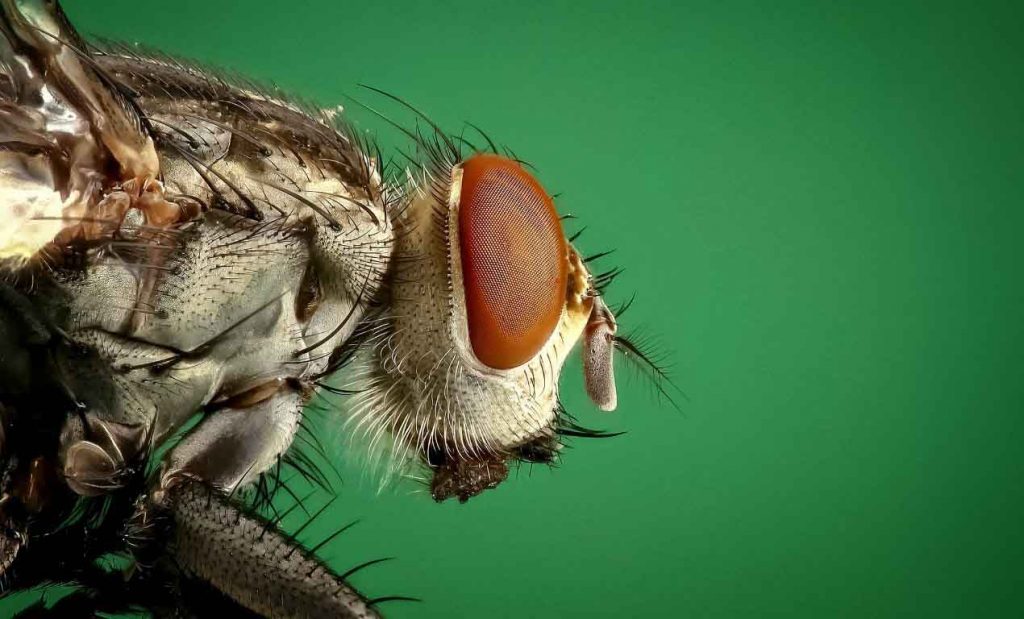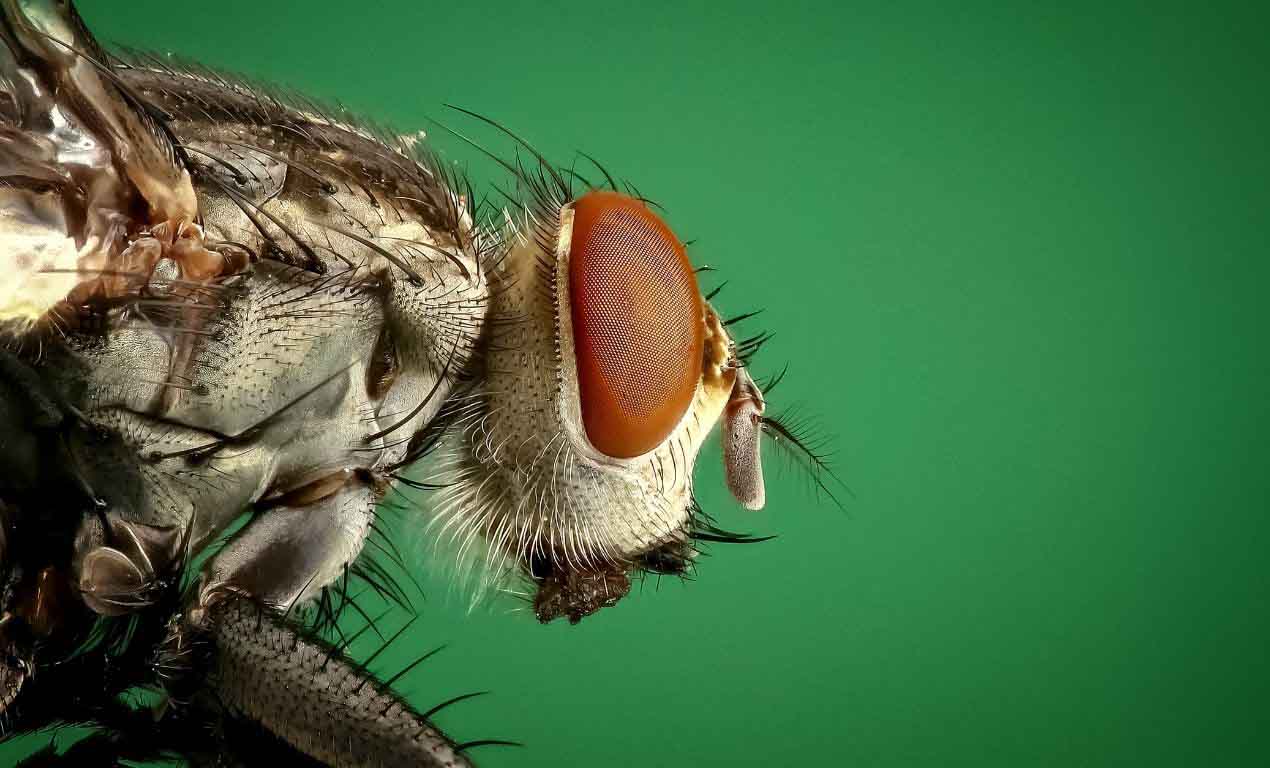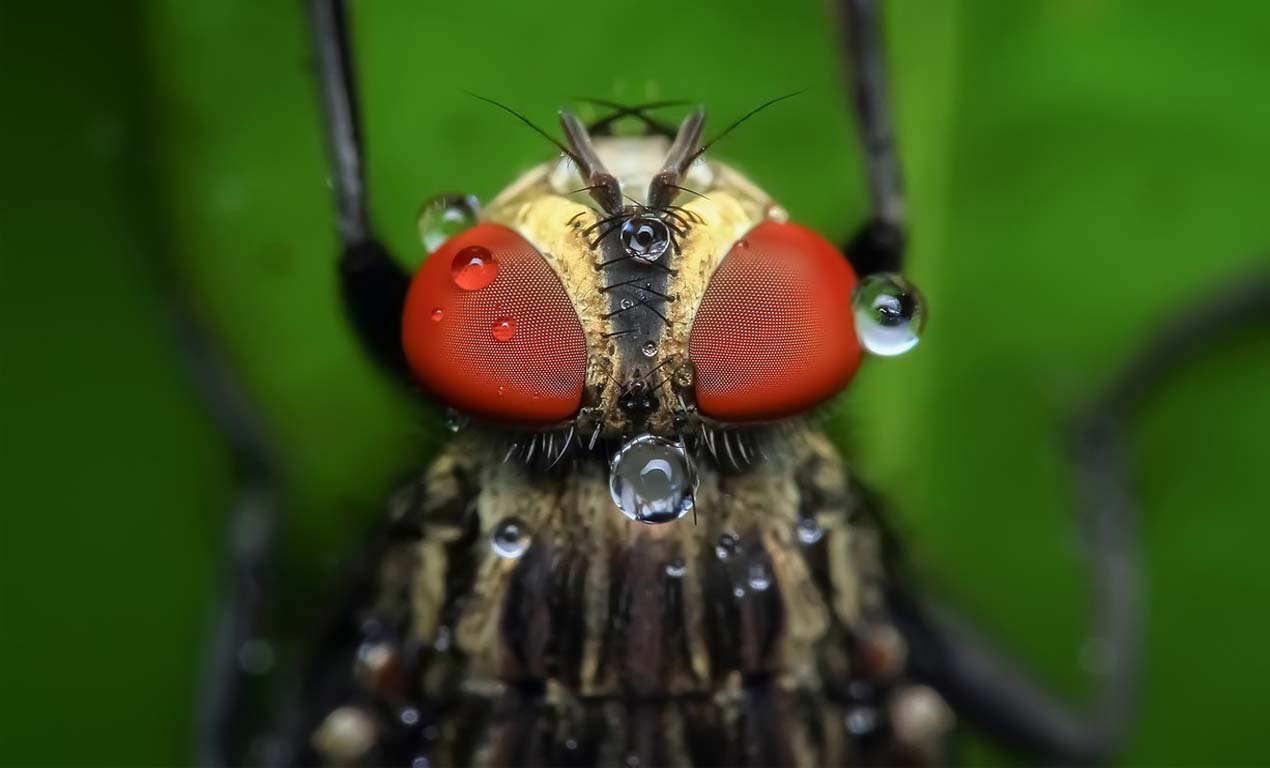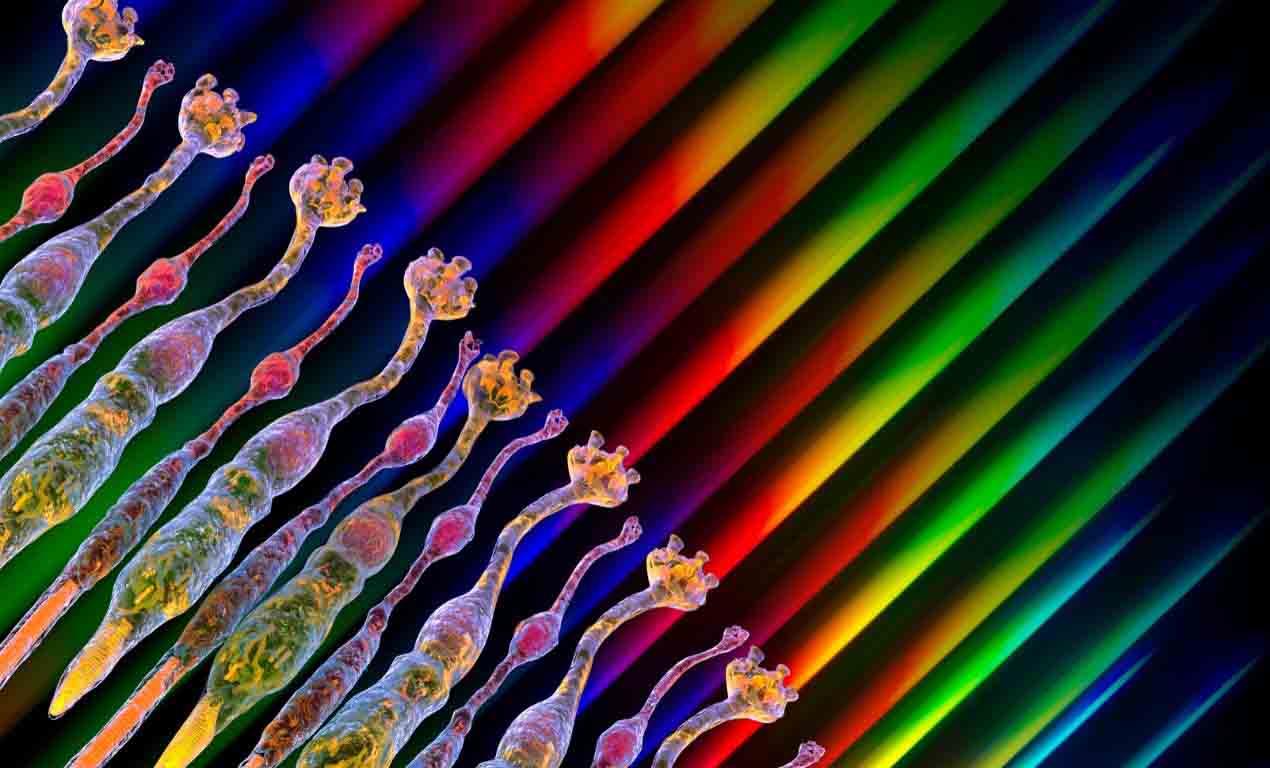
 Flies are an insect of the Diptera order. They use a single set of wings to fly. The hind wing gets used as hi-speed sensors or halters, with which they maneuver their movement during flight. Their mobile head has a pair of large compound eyes which allows them to see 360 degrees.
Flies are an insect of the Diptera order. They use a single set of wings to fly. The hind wing gets used as hi-speed sensors or halters, with which they maneuver their movement during flight. Their mobile head has a pair of large compound eyes which allows them to see 360 degrees.
So, do flies have good eyes? Yes, absolutely. Their eyes are fascinating. They have compound eyes and can see almost all around them. They have the fastest visual response in the animal kingdom and that’s why they are so hard to catch. They react when they see any broad figure coming close to them.
Continue reading to know it in details.
Little Bit About Flies
Flies are excellent pollinators and contribute mainly to the ecological balance of humanity. Their small and streamlined bodies are ideal for their flights. The head bears the eyes, antenna, and mouthparts. The second segment or thorax bears the wings, their muscles, and the halters. The third segment is the abdomen and has eleven parts.
Compound Eyes
The compound eyes present in insects are very different from the human eyes. They contain many eyes or ommatidia, and each has a cornea, lens, and photoreceptor cells. Since they have large numbers of these eyes, they see varied colors and forms.
Also, since each ommatidium is slightly at different angles from each other, each of them absorbs different sets of signals, which is sent to their brains to process.
Though the resolution of what they see is not anywhere near human eyesight, they get to see the different fields of vision, the polarization of light, and quicker movements, all at the same time! It indeed is very complex!!
Eyesight Of Flies
 Flies have the fastest visual response among all in the animal kingdom. As per the latest study, this amazing quick response is due to the fact, that when flies perceive the intensity of bright or dim light, each perception, or flashes gets immediately sent to the brain.
Flies have the fastest visual response among all in the animal kingdom. As per the latest study, this amazing quick response is due to the fact, that when flies perceive the intensity of bright or dim light, each perception, or flashes gets immediately sent to the brain.
Mechanical Force To Electronic Transmission
The mechanical energy gets converted to electrical response, when the specialized photoreceptors in the eyes, transmits this information to the brain. In humans, the transfer takes place chemically.All this while, it got understood that the ion channels sent the message due to chemical changes.
However, recent studies show that the electronic transmission took place due to the mechanical impulse on the eye, which triggered immediate signal to the brain via the optic nerves.
Transient Receptor Potential (TPR)
The ion channel in the photoreceptors of a flies’ eye is also known as “transient receptor potential’. These TPR channels are getting studied for other ailments in humans. With this new finding of mechanical force getting converted into electric energy in flies, it is now getting fresh impetus in the study of human behavior.
Microvillar Photoreceptor Cells
 A fly can track any movement nearly five times faster than human eyes. This quick action is possible due to the microvillar photoreceptor cells. The photo-receptive membrane gets made of tiny tubular layers or microvilli. In each of the photoreceptor cells, thousands of these microvilli or rod-like structure gets packed.
A fly can track any movement nearly five times faster than human eyes. This quick action is possible due to the microvillar photoreceptor cells. The photo-receptive membrane gets made of tiny tubular layers or microvilli. In each of the photoreceptor cells, thousands of these microvilli or rod-like structure gets packed.
Photo Transduction
These absorb the incident light, and the chemical machinery present in each of these microvilli gets converted into electric response, that reaches the brain. This process is known as phototransduction.
Phototransduction commences with the light getting absorbed by a visual pigment molecule known as rhodopsin or visual pigment molecule. In microvillar, there is activation of a particular enzyme phospholipase C (PLC), which removes a significant component from a specific lipid component of the cell membrane (PIP2).
This enzymatic reaction allows the ion channels to open in the microvillus membrane, thus releasing Na+ and Ca2+. These positively charged ions flow into the cell, and an electric response gets generated.
Ommatidia
The eye of a fly is quite complicated. Their compound eyes contain over 28,000 light sensitive-structures, called the ommatidia. These got found arranged around the cornea. The cornea, in turn, got made up of an equal number of hexagonal structures, each forming an image of its own. The combination of all these images is mosaic-like formation.
Compound eyes get generally found among all animals without a backbone or invertebrates. These eyes help the animals to detect swiftly moving objects, whereas simple eyes like us, help to see nearby objects and changes in the intensity of light. Male flies process the incoming visual information 60% faster compared to females.
This excess energy required by males in locating their female counterparts requires them to burn more calories. In the case of females, they use their metabolism in egg creation and laying activities. Flies get found across the world, including Antarctica, and has more than 80,000 species.
Rhabdom
All flies have rhabdom in each ommatidium. The light enters the thro’ lens to the rhabdom, and the photopigments get stimulated. Each rhabdom gets split into seven parts, and they can increase these seeing parts in multiples of seven. This gives the flies tremendous vision compared to other insects with compound eyes. With around 3,400 to 3,500 ommatidia in house flies, they see lots of light shades and forms.
They see movements much quicker and can have a better understanding of their environment. The only area of concern is the focus, which gets offset with a mosaic vision present.
Flies usually get to see in low light, which means they have sight window from early dawn to late dusk to forage, mate and return to base. Their compound eyes can see a little more compared to others with similar eye structures. This is because they can split each rhabdom in ommatidia into seven or multiple of seven parts. Flies need to be close to a subject to see them correctly.
How’s Fly Eyesight Different From Human?
The common housefly or Musca domestica, see the world very differently than humans. They see the forms, colors, motion, and light, not like us. The compound eyes of flies get made of thousands of ommatidia or visual receptors. Each of these ommatidium functions like individual eyes. All these receptors together create a vast field of vision for the flies.
Humans’ eyes can move due to the muscles attached to it. Thereby the eyes can change its’ field of vision and gather more data about its surroundings. The flies’eyes cannot move. But, since they get protruded and on top of the head, they get 360 degrees of vision. In humans, the pupil controls the amount of light that falls on the lens. This, in turn, forms the image on the retina. This information gets sent to our brains, through the optic nerves, which enables us to see!
The fly does not have a pupil and hence cannot control the amount of light entering the eye. They also cannot focus on the image. They are short-sighted. It’s like a mosaic of images. If you step back, you will have the entire picture. Up close, it might look like many images for the fly to see.
Since they are not able to focus, flies see multiple images, movement, the intensity of light, and so forth. Hence, they tend to flee when they see any movement or a broad form approaching them. They tend to be apprehensive.
Flies have limited vision to see colors. They have only two types of color receptor cells, which makes it difficult for flies to distinguish between shades of nearby frequencies. Like all insects, they don’t see the color red. Since every color travels through its wave frequency, red with the lowest frequency is visible to humans. Flies in the meanwhile can see polarized lights, which humans can’t differentiate. The polarised light wave travels only on one plane.
Eyes of flies can detect motion, though they cannot focus on the object. Thus they are evasive when you try to swat them. The movement around us gets seen through flashes. During a particular period, the optic nerve can decipher what gets seen to the brain as flashes.
A human being can send up to 60 flashes per second, while a fly can send around 250 flashes. This means they can see everything four times faster than us. Many things which appear slow to us, is quite quick for them.
The compound eyes in flies see objects right-side up. Since there are multiple eyes, known as an ommatidium, they don’t have to turn their head to see the rear. They have 360-degree vision, and hence there are no blind spots like humans.
Conclusion
Flies have compound eyes that give them a 360-degree vision. They have a large number of ommatidia that provide them with a plethora of colors and forms, including UV lights. Since their photoreceptors can quickly decipher the light and form and send it to their brain, which is four times faster than human eyes, they can perceive much faster.
This helps them to react much quicker than other insects. The only area of concern for their compound eyes is that they are fixed and cannot be moved or adjusted to focus on the objects.
Welcome to my blog. I have been doing pest control for years since my house, garden and pets were always attacked by various kinds of pests and as a result I had to know proper pest control techniques that works. In this blog I share all the tips and tricks that I know and I hope you’ll find it helpful.
